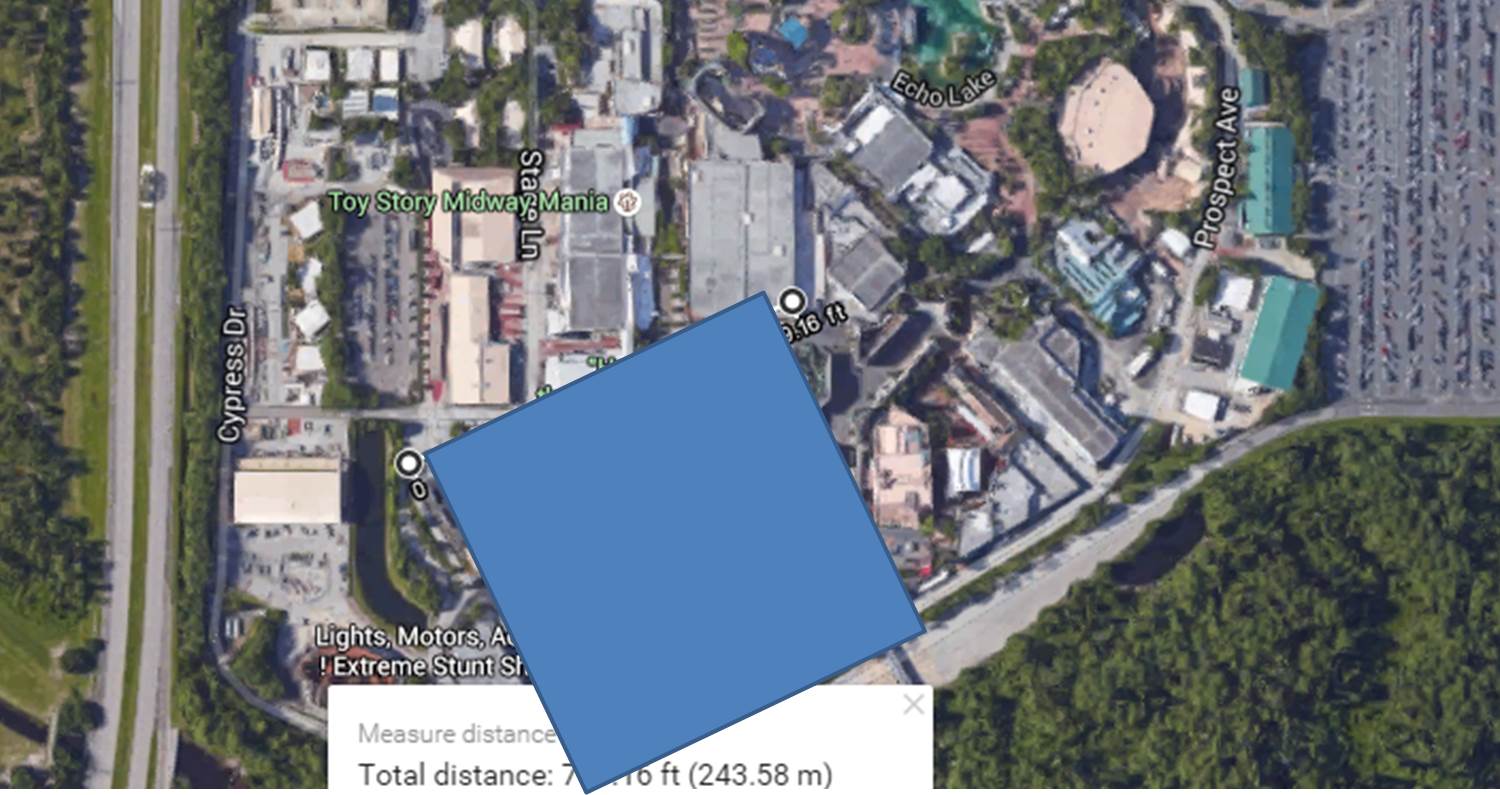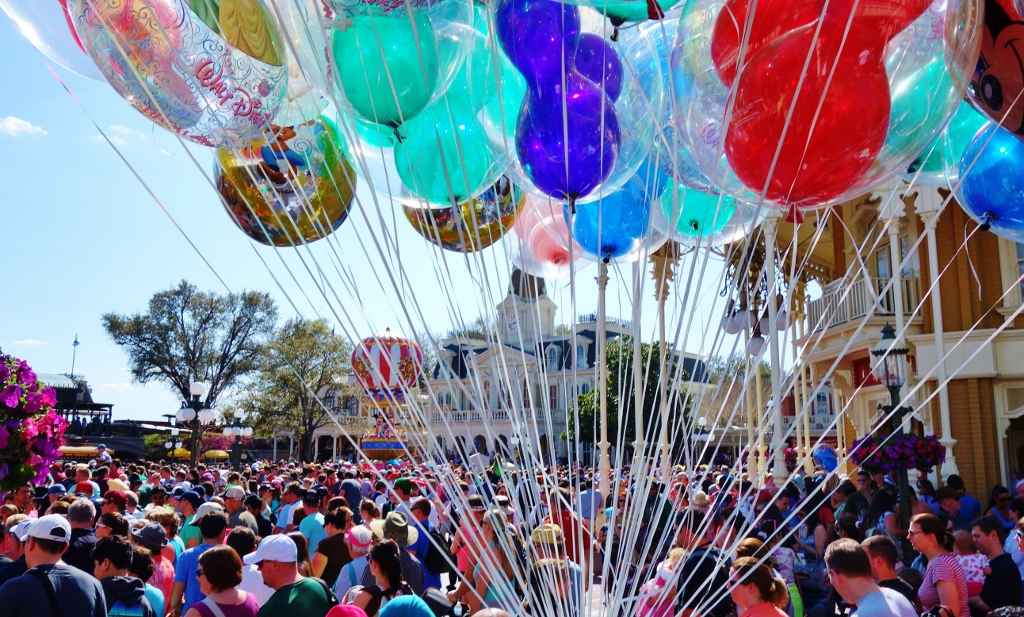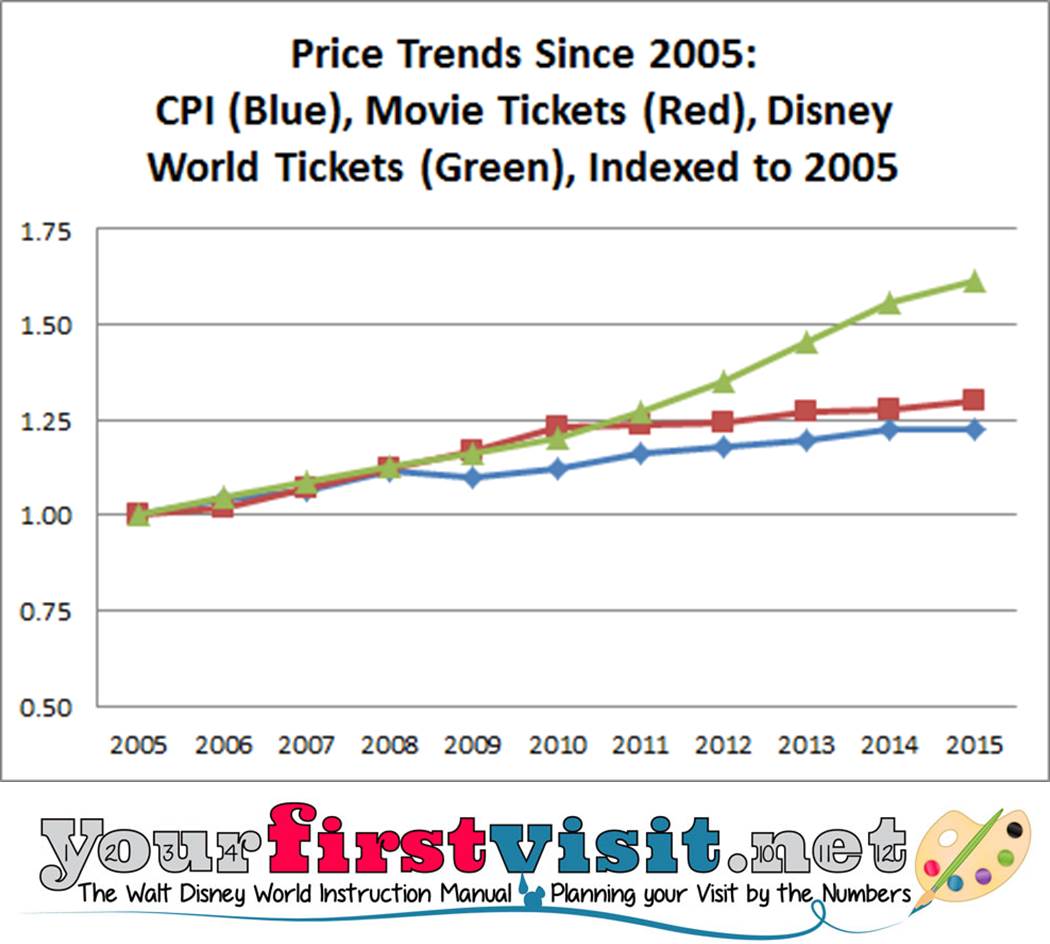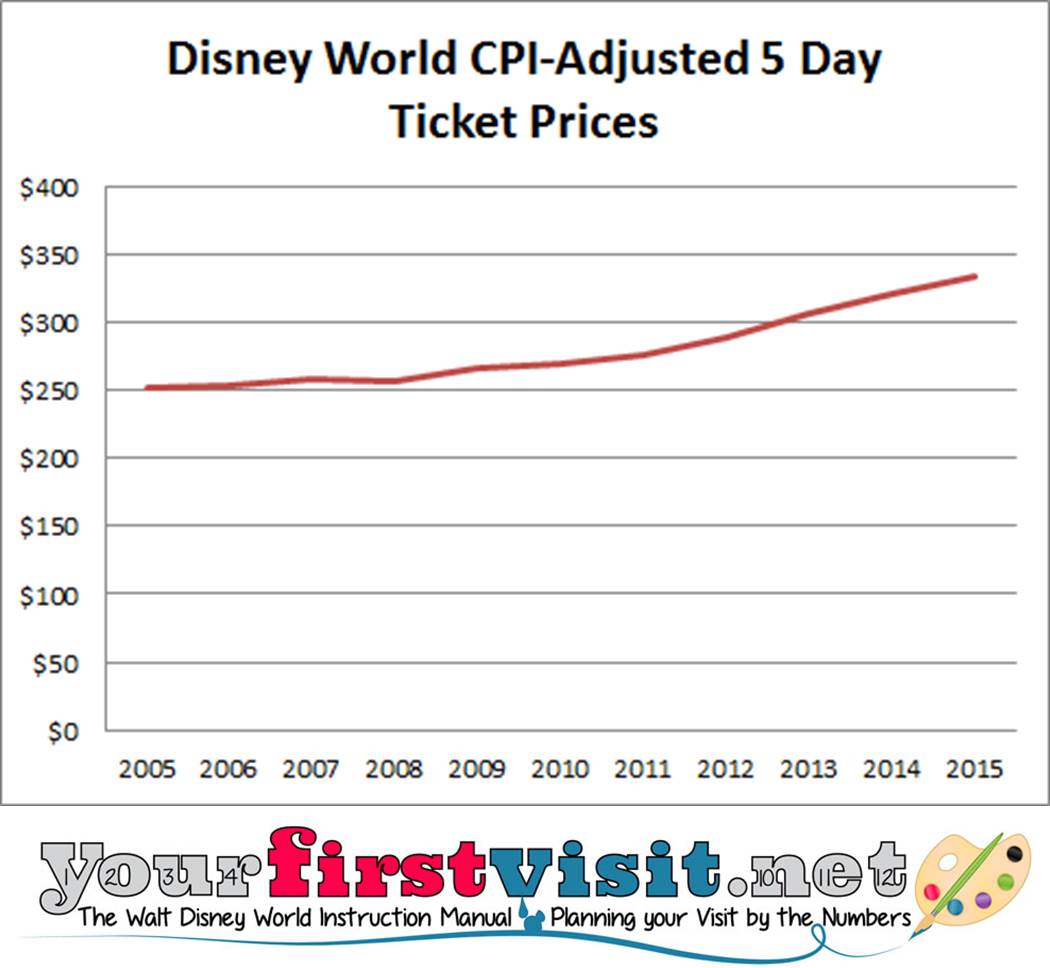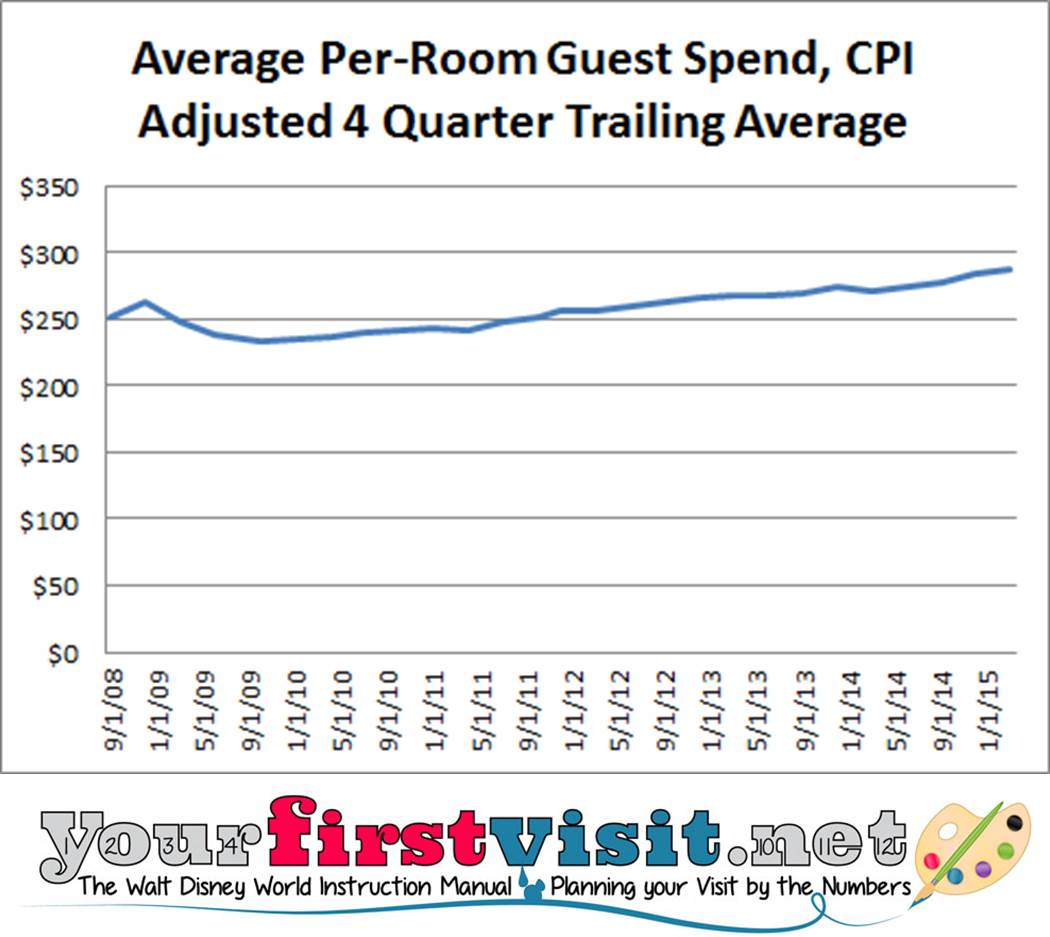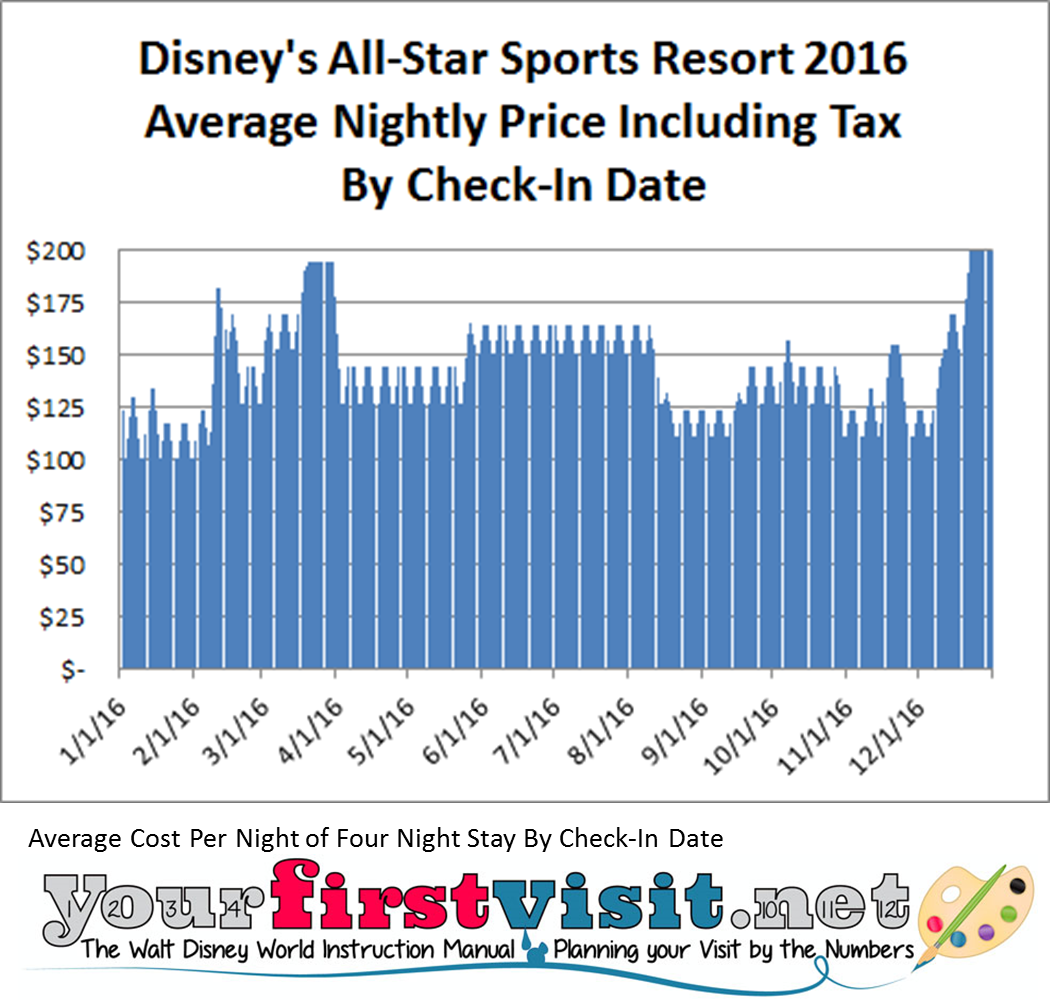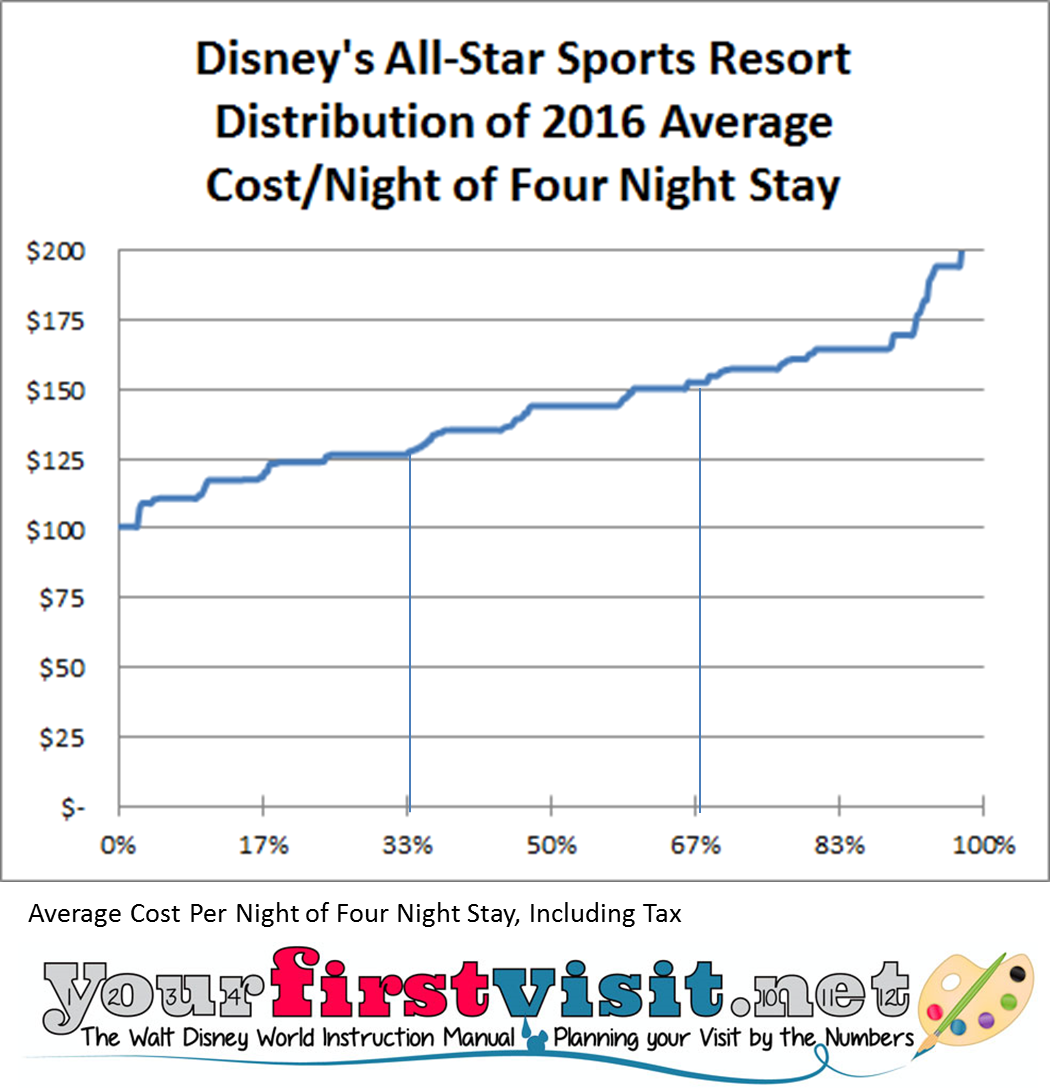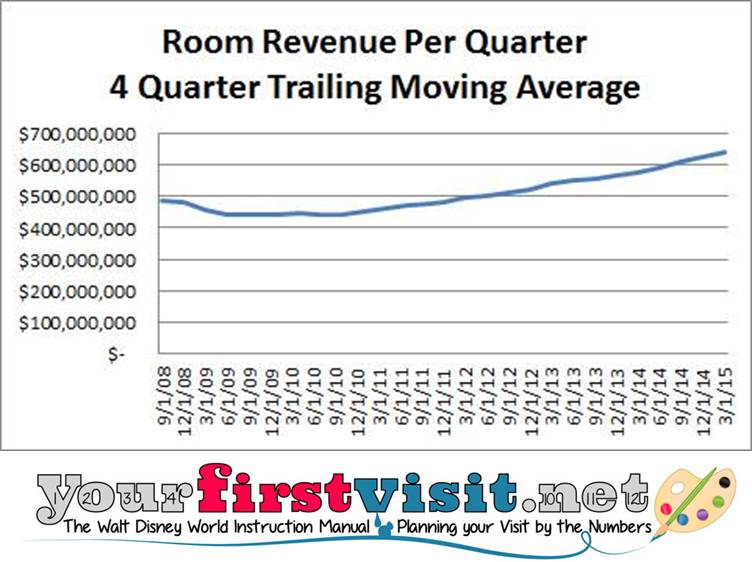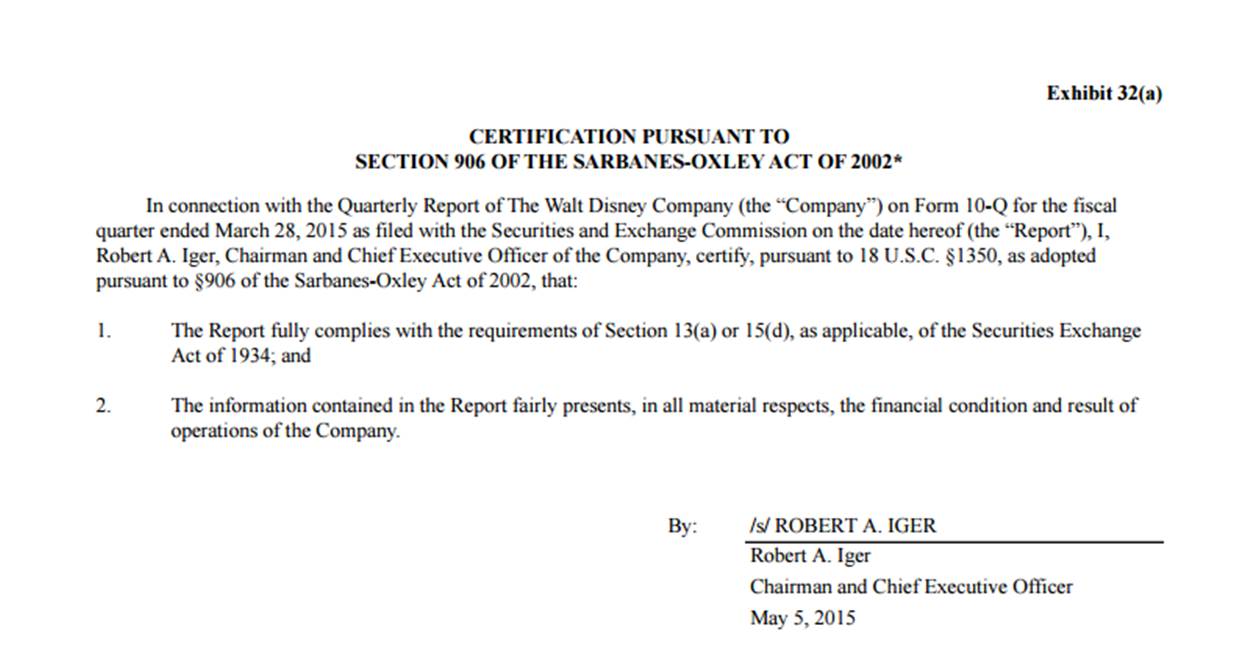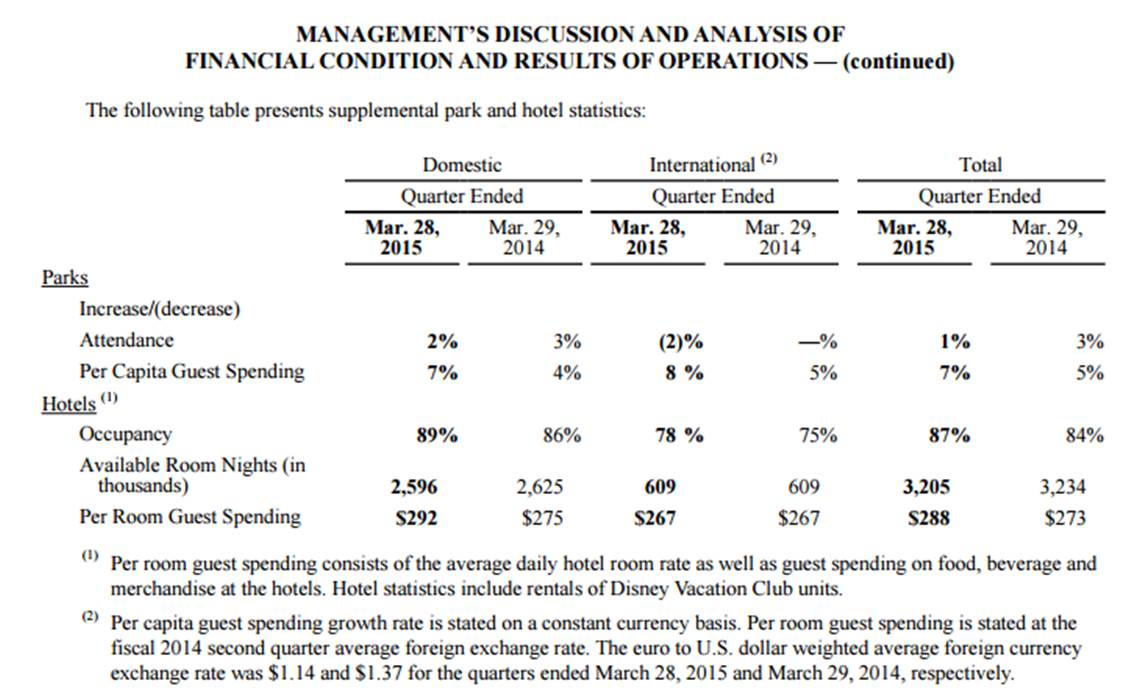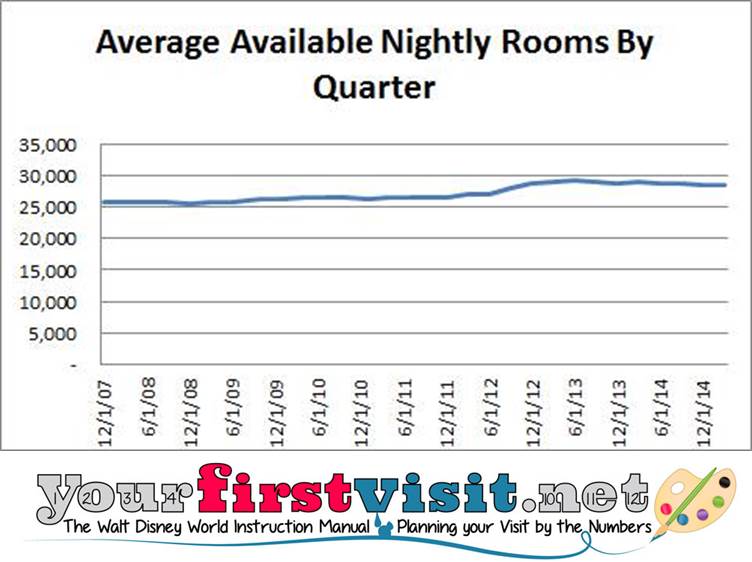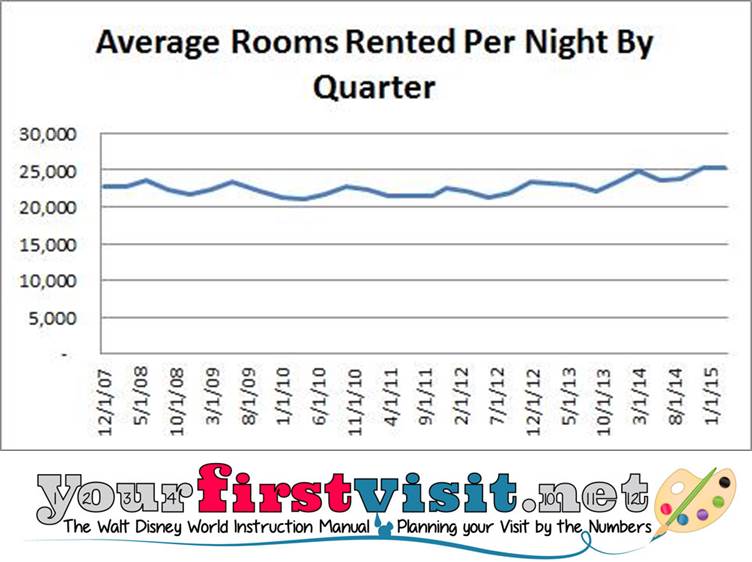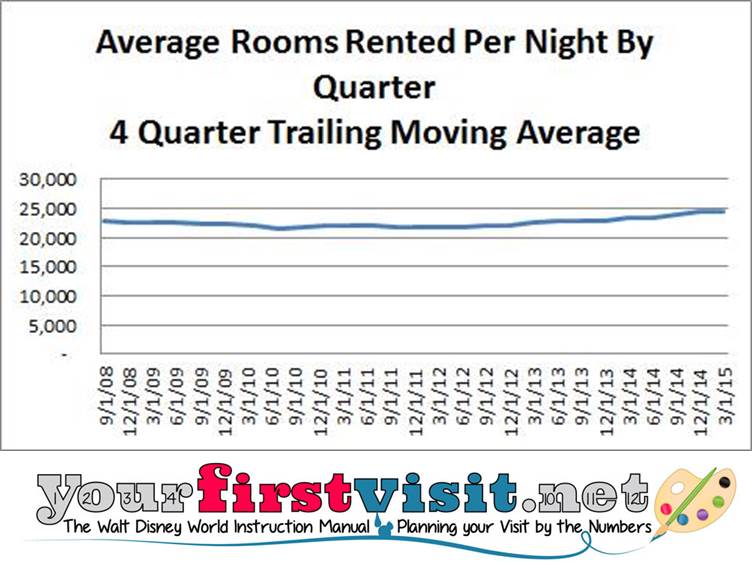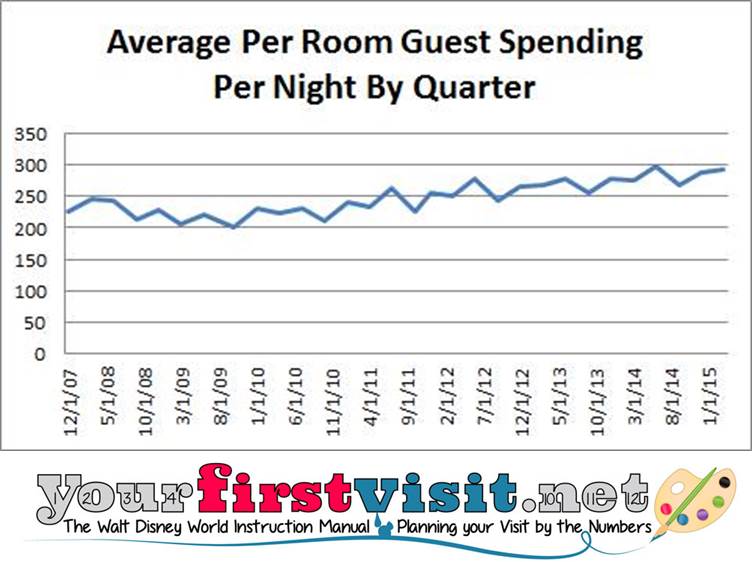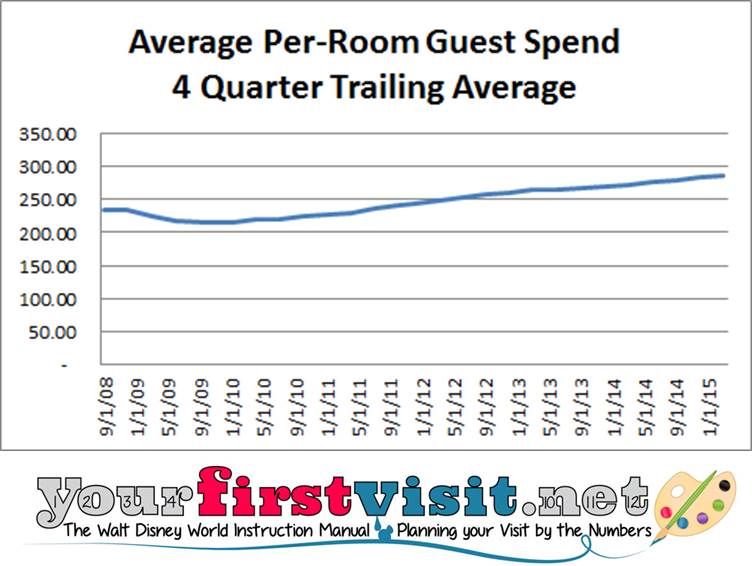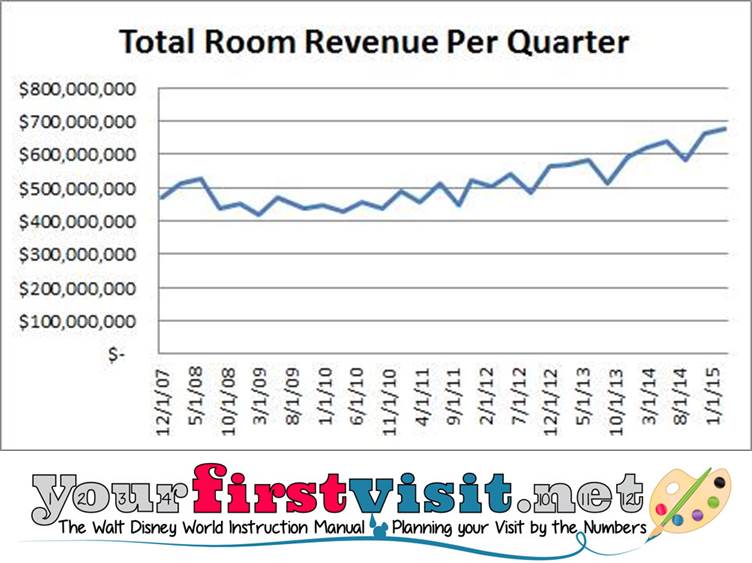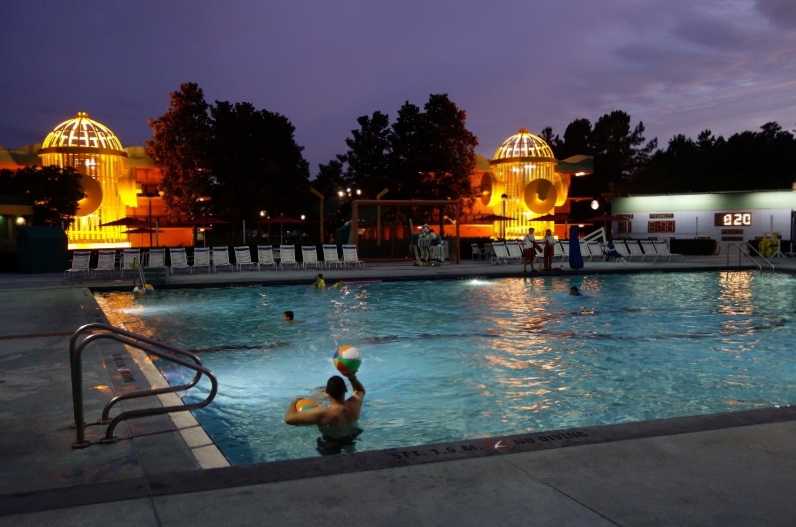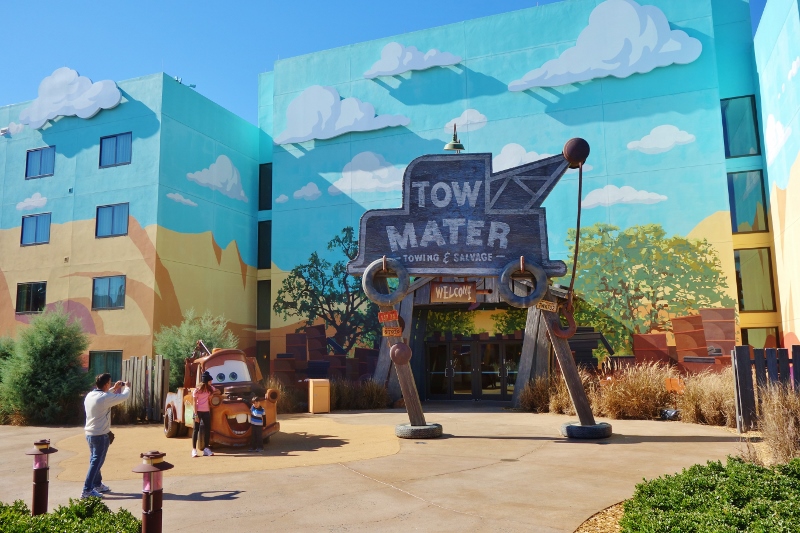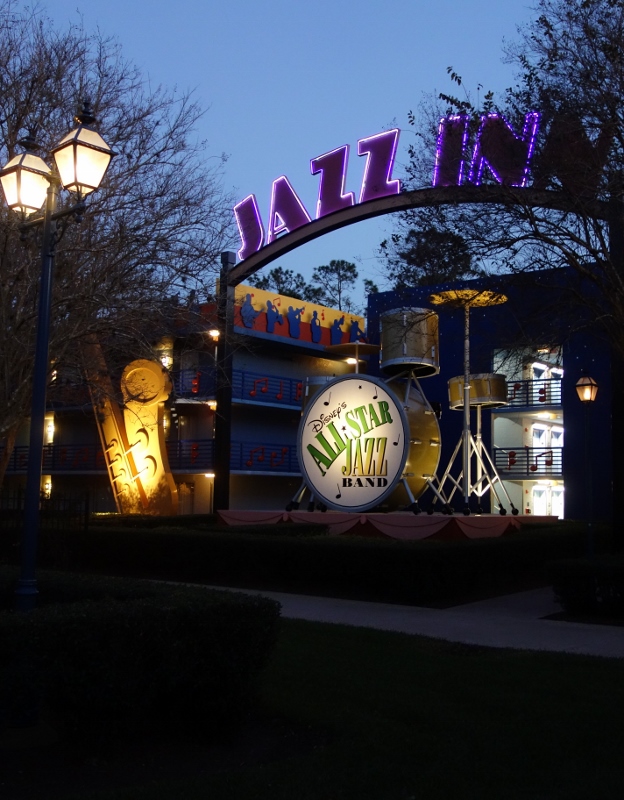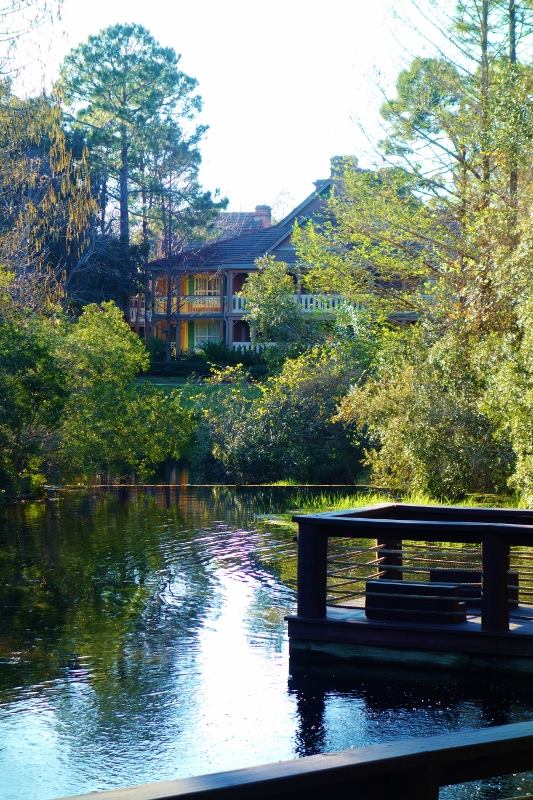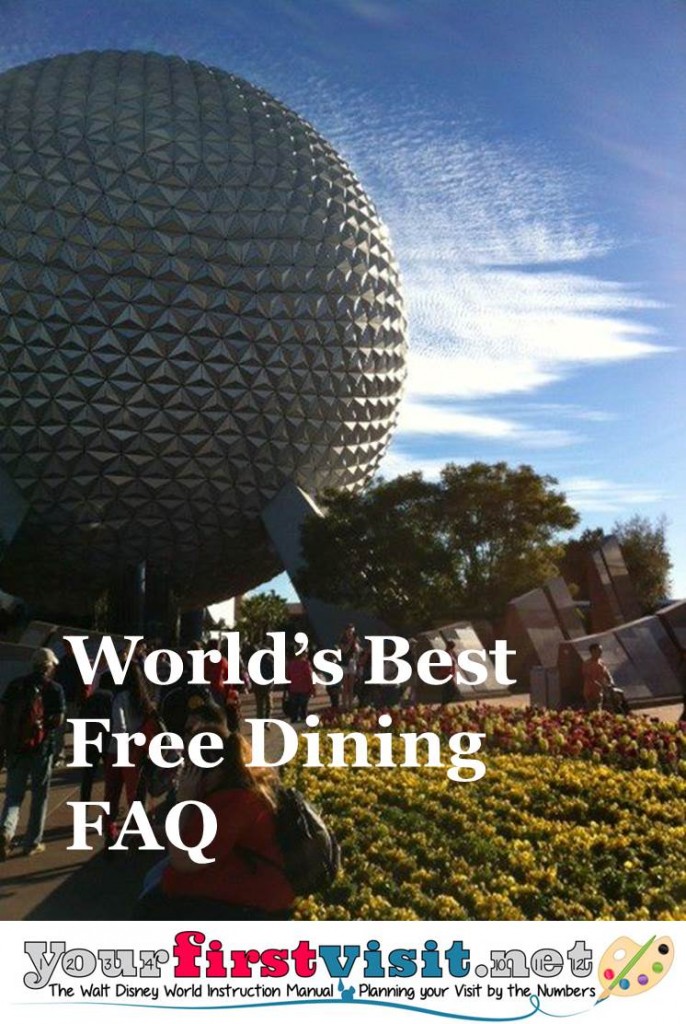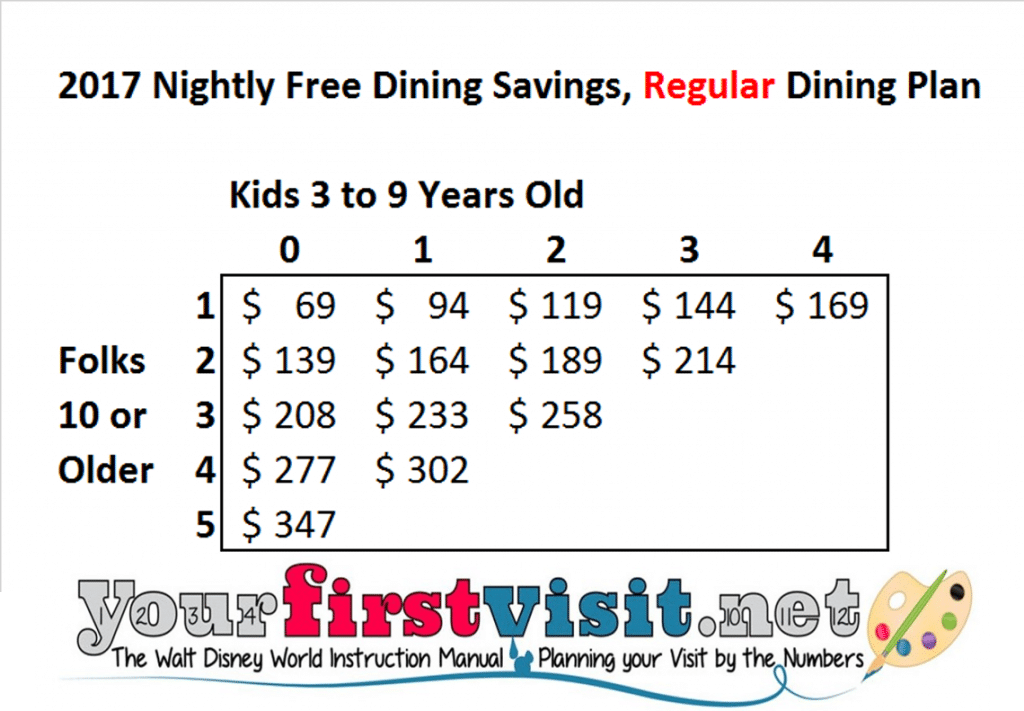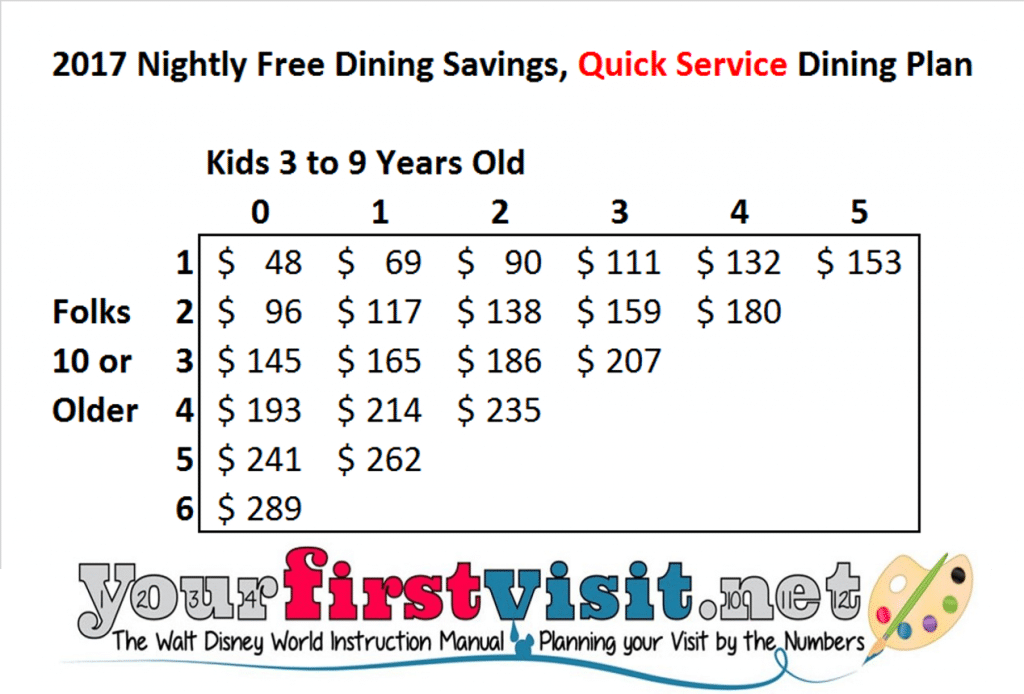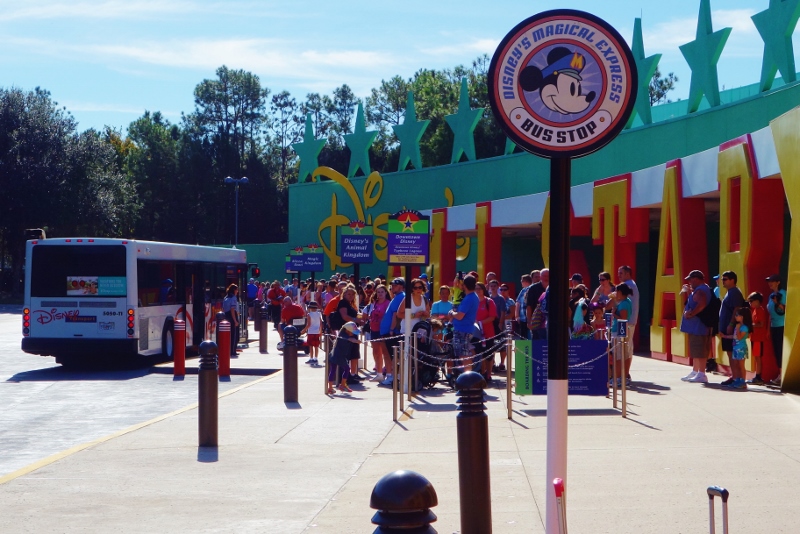Category — zz. Even Geekier than Usual
How Big Is the Hollywood Studios’ Star Wars Expansion?
Disney announced today the addition of a 14 acre Star Wars land at Disney’s Hollywood Studios.
How big is 14 acres? Well, an acre is 43,560 square feet, so 14 acres is about 610,000 square feet.
An acre can be any shape, of course, but to get a sense of scale I planted 14 acres as a square box (780 feet on a side) on top of a corner of the Studios just to get a sense of the scope of this expansion:
This is not a prediction in any sense–the Star Wars land is unlikely to be in this corner of the park, and will not be a perfect square. But it does give you as sense of how big 14 acres is.
The important takeaway? A good sized but not overwhelming expansion…and lots of room will still be left at the Studios for the rumored Pixar expansion, too.
Update: Disney has also announced the Pixar expansion, 11 acres.
Follow yourfirstvisit.net on Facebook or Google+ or Twitter or Pinterest!!
August 15, 2015 No Comments
Hey, Middle Class: You Really ARE Welcome at Disney World
“So, 30 years ago, Frank Wells asked me…when we were thinking of going from $16.50 to $18.50 [for park tickets]. He said, Jay, is this the ceiling on pricing?”
–Jay Rasulo, Chief Financial Officer, The Walt Disney Company, at the MoffettNathanson Media & Communications Summit, May 13, 2015
DESPITE INCREASING PRICES, DISNEY WORLD IS STILL AFFORDABLE
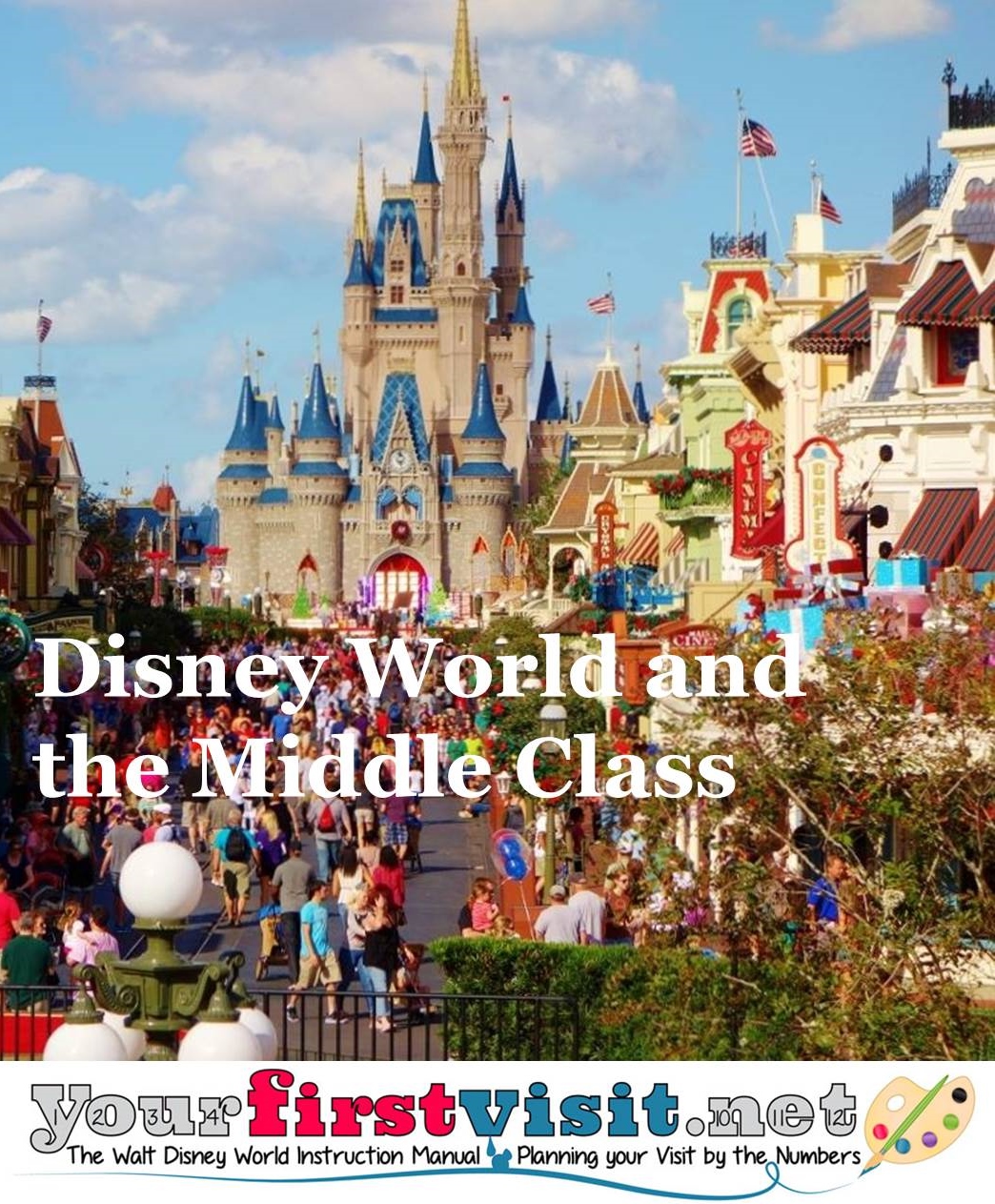
The most recent flowering has been claims that the middle class can’t afford Disney World at all. These include assertions that
- Disney World has “priced middle class families out”
- Disney World has “left the middle class behind”
- Disney World is “abandoning [the] middle class”
- Disney World has “set their prices at the top ten percent of family incomes”
- Disney World’s “outrageous prices” aimed at “the upper class” … “leave for everyone else … cheap-but-complex ticket deals for certain days, off-site lodging, or … just attending … Six Flags.”
OK, sorry Six Flags, but here’s the reality:
- A Disney World vacation is indeed eye-wateringly expensive (Wanna know how to blanch an almond? Show it Disney World ticket prices…)
- Disney World ticket, hotel and food prices have indeed been going up faster than median household incomes and the CPI for years now. Each time they do so, more middle class families are left out, and other middle class families have to save for longer to be able to afford a visit.
- Even so, a family of four can have a great vacation at Walt Disney World (and stay in a Disney World hotel while doing so) for $2,600 to $3,100, plus travel costs. Plenty of middle class families can’t afford that, but plenty of middle class families can.
The figure of $2,600 to $3,100, plus travel costs is based on
- Five days of park tickets—the minimum for a great visit, with two days at the Magic Kingdom and one day each at Disney World’s other three parks, at $1,350 total for four people. (The way Disney prices tickets, a 6th day in the parks—which I’d recommend—adds a total of $43 to this amount. You pay a shocking amount for the first few days at Disney World—after that, a day in a park is about the cost of a movie.)
- Four or five nights in a standard room at one of Disney’s All-Star Resorts, which during two thirds of arrival dates in 2016 average $100 to $150 a night. Figure this as $500 to $750.
- Five days of food—your mileage will vary, but there are plenty of solid $15 dinners at every hotel and every park at Disney World. A range of $35-50 per person per day sums to another $700 to $1,000.
Since there’s no actual definition of the middle class, there’s no actual definition of its income range, either.
Reasonable people might use definitions that include household money income ranges of $20,000 to $105,000, $20,000 to $190,000, or $40,000 to $125,000–this last is the one that resonates with me. (All from this, although I had to interpolate one of the numbers.)
Whatever you define as the range of middle class incomes,
- Most households earning at the bottom of the middle class income distribution are clearly priced out of a Disney World vacation, and have been for decades. As the poet and philosopher George Clinton once sadly reflected, “Broke don’t travel
.”
- Just as clearly, many families higher in the middle class income distribution can afford $2,600 to $3,100, plus travel costs.
- Other families in the middle of the middle class income distribution have to scrimp and save to make a Disney World vacation work, and when prices go up even a little bit, their visits get tenuous. Danielle said this on my Facebook page: “So sad to me because [I] haven’t been in 25 years and finally saved enough to go for a family of 5. And now prices are still going up [so] it may not be possible for a lot of families to afford. 🙁 Everyone should be able to get to Disney at some point in their life.”
But I don’t think a vacation that can cost as little as $2,600 to $3,100, plus travel costs, can reasonably be argued as “pricing middle class families out” or “outrageously priced.”
Now if you read the largely ridiculous articles circulating around, you might be surprised by this. Aren’t the rooms at Disney World $2,000 a night? Isn’t dinner $115 a night just for a steak (and don’t forget taxes and the tip)?
Well, by my count Disney World does indeed own around 150 or so spaces that go for on the order of $2,000 a night or more—around 110 “Grand Villas,” 20 newly-opened “Bungalows” at the Polynesian, and the rest fancy multi-bay suites. (I have argued elsewhere, perhaps tongue-in-cheek, that the new Bungalows are aimed at the important President for Life/ dictator/ oligarch/ drug cartel jefe market segment…)
But it also offers around 9,000 rooms that are typically well under $200 a night, of which about 5,000 rooms are typically $150 or less.
The steak price was a comic error on the part of the writer, who perhaps was more concerned to be tendentious than accurate. But it has been true for years that you can pay an arm and two legs for dinner at Disney World…or you can pay about $15. And there’s a lot more places that serve dinner for $15 than cost an arm and a leg.
That you could spend tens of thousands of dollars on a Disney vacation does not mean that you must. When I shopped for a car last fall, the fact that cars existed that were 15 times as much as I could afford was irrelevant (except insofar as it gave me an excuse to read Dan Neil’s great reviews of them, with lines such as “Like very tight pants, these cars don’t always tell the story owners think they tell“). The cars I could not afford did not matter, and I am happy with the Hyundai that I could afford.
Can you put together a vacation budget of $3,000 over a year, or over several years? Then Disney World welcomes you.
The rest of this post is, I suppose, an analytic appendix to this key point—that many in the middle class can indeed afford Disney World.
TICKET PRICES
Many of the articles have focused on ticket price increases since Disney World opened in 1971. There are two problems with most of the presented analyses—although their overall conclusion that prices are rising faster than inflation or median household money income is dead-on.
One is that they focus on one day tickets, but no one who knows Disney World would recommend just a day there, there’s too much to see. Focusing on one day tickets understates the cost of a Disney World vacation. Five day (or longer) tickets are the appropriate unit of analysis. Five day tickets yield two days in the Magic Kingdom and one day at each of Disney’s three other theme parks, Epcot, the Animal Kingdom, and Disney’s Hollywood Studios–this is the minimum for a great trip.
Second is that they compare apples and oranges. What a ticket covered profoundly changed in the early 1980s, when the parks shifted from two sets of prices—one to get in, and a second to actually get on a ride–to an inclusive admission price that also included access to the rides.
The current ticket format—“Magic Your Way” tickets—emerged in 2005. Below is the trend since 2005 in prices for 5 day Magic Your Way tickets, CPI, and, just because I could find it for a comparison, movie ticket prices.
You can see the major increases in ticket prices over inflation since 2008.
Inflating past ticket prices by the relevant CPI figures yields this inflation-adjusted chart of 5 day ticket prices:
You can see some “restraint” during the recession (there was even more than appears from this list-price chart, as there were some pretty wild discounts early in that period, such as seven hotel nights and seven tickets days for the price of four), and accelerating increases coming out of the recession.
In real terms, ticket prices for a five day trip have increased by about $80 per person since 2005 ($8/year, or $16 a park day)—or about $320 for a trip with a four person family.
This is not a trivial increase, and will require a longer savings period for some families, and indeed will shut out a slice of other families entirely.
But $300 more since 2005 is not enough to make Disney World “unaffordable to the middle class.”
One of the more comic claims made in the recent spate of articles is that Disney has “set their prices at the top ten percent of family incomes” The top ten percent of household incomes begins at about $150,000 a year. If you think a family below the top 10%–e.g. one that makes “just” $145,000 a year–can’t afford another $300 on ticket prices compared to 2005—well, then, to the barricades!
Although it may not seem that way on wildly crowded days like New Year’s Eve and the 4th of July, the parks at Disney World have limited capacity and excess demand.
It rations that demand through price increases, and even so has been seeing record attendance for a while now. This partly because, as Disney CFO Jay Rasulo noted at the May MoffettNathanson Media & Communications Summit, “we price on a value basis and we keep a very, very close check on what the value proposition is for our guests and the feedback they give us about the value of a day in one of our parks.”
ROOMS
Disney World rarely discounts ticket prices, but its hotel room prices both drop and increase multiple times over the year, and see in addition deal after deal over the course of the year (fewer, and with lower effective discounts, since the recession ended).
The best way to see trends in rooms is thus not to focus on list prices but rather on prices real people actually paid for Disney World’s 27,000-plus actual rooms.
With a little math, you can construct this from data in Disney’s SEC filings. This math is the source of the following chart–with past prices inflated to CPI, and four quarter trailing moving averages used to smooth out seasonal prices and thus reveal pure trend:
What you see is realized prices dropping during the recession, and not hitting their pre-recessionary peak until late 2012. Since then they’ve gone up about $25/night in real terms compared to their pre-recessionary peak—or up $100 to $125 for a four or five night stay. (For the curious, un-adjusted charts are here.)
But doesn’t a price of almost $300 a night shut out the middle class? Well it might were that the only price, but it’s in fact the average price of a wide range of options among Disney’s 27,000 rooms.
Disney World has 9,000 rooms in its value resorts where standard room prices are much cheaper than $300 a night—and its last major hotel add, in 2012, was an expansion of these lower-priced rooms.
At the lowest-priced among these, the three All-Star Resorts, you can pay less than $125 a night many nights of the year for a standard room, and less than $150 most nights:
Because Disney manages hotel demand through pricing, the most highly-demanded nights of the year will see higher prices than $150. But if you rank order the average nightly cost of a four night stay in a standard room at, for example, All-Star Sports, you’ll see that a third of 2016 arrival dates are available for $125/night or less, and two thirds at $150 or less:
As I noted last week, many Disney hotel rooms saw major—sometimes astonishing–price increases for 2016.
But the All-Stars showed no increases most seasons—that’s a price cut in real terms. Moderate resort Caribbean Beach saw increases at just CPI—that’s a “no increase” after inflation—and standard rooms at the deluxe resort Wilderness Lodge also saw no price increase most seasons in 2016—again, a price cut in real terms.
Other Disney World hotels saw much higher price increases. But your family doesn’t have to choose them. The middle class can still afford the All-Star Resorts, many easily so, and in fact most times of the year will pay less in 2016, after inflation, than in 2015.
THE VARIABLE PRICING SURVEY
One of the odder things about the recent spate of silly articles was that they came out not based on any particular relevant recent pricing event. Ticket prices had gone up in February, and 2016 room rate increases had not yet been announced.
My guess is that all this was inspired by facts that were true but irrelevant (20 new rooms that go for $2,000 a night among Disney World’s 27,000 other rooms that go for less—usually MUCH less), facts that were untrue and irrelevant—the putative $115 steak—and a survey.
Yes, a survey. Disney recently released multiple surveys to test reaction to variable pricing of its park tickets—charging more for more popular dates and less than that for less popular dates. (The line at the beginning of this post that the middle class has been relegated to “cheap-but-complex ticket deals for certain days” likely came from a confusion between these survey questions and reality.)
All these surveys showed current ticket prices for less popular dates, and higher prices for more popular ones—that is, on average a price increase. Some of these surveys also showed additional new ways to price multi-day tickets, and in the case of one of these, you could infer the doubling of the price of some multi-day tickets.
Well, folks, you heard it here first: Disney isn’t suddenly doubling ticket prices this year, or anytime soon.
Moreover, if the surveys didn’t all show either current or higher prices, then the Disney fan community—sometimes characterized more by volubility than good judgment—would have been agog with the claim “Disney is cutting some ticket prices!” That’s not gonna happen, either.
Third, Disney World does all kinds of surveys, all the time. Most turn into nothing. From my co-author Josh:
Fourth, as I’ve noted before, it would actually be a great thing—even for the middle class—if Disney reduced attendance the most crowded days of the year by shifting to variable prices, and then using increased prices to better fit capacity to demand those dates.
On New Year’s Eve at Epcot last year some people waited five hours for some rides. Five hours.
Those five hour waits fell on the just and unjust alike, so peasants, the proletariat, the petite bourgeoisie, and the nobility can all agree with fervor that spending five hours waiting for one ride is simply not to be borne. Viva la revolucion!
Follow yourfirstvisit.net on Facebook or Google+ or Twitter or Pinterest!!
June 30, 2015 15 Comments
$2.5 Billion in Disney Hotel Revenue, But Still No Coffee Makers in All-Star Movies
Disney’s late summer and fall Free Dining and late summer room discount deals came out about two weeks ago.
The universal experience, so far as I can tell, is that even though more rooms opened for booking into the deal May 9, many fewer standard rooms were available for these offers—especially free dining at the moderates–than we’ve seen in the recent past.
Moreover, 2015’s free dining deal saw a new requirement: families had to add Park Hopper or Water Park and More add-ons to their (always previously required) base tickets to even get free dining.
For those who had not planned to buy these add-ons, that’ll cost a family of four more than $270 extra, and will, for those ten or older, blow a night of savings on the free regular dining plan or almost two nights on the free quick-service plan. Results are even worse for kids 3 to 9.
So what’s up? Well, what’s up is that Disney doesn’t need to discount so much anymore. See the chart:
Hotel revenues the last four quarters were more than $2.5 billion, including the first-ever two straight $650 million+ quarters. And despite major net capacity adds since the recession (Kidani Village, Bay Lake Tower, Grand Floridian Villas, Art of Animation), occupancy is running at levels not seen for years.
You will see some people who have not done the math—or don’t know what Sarbanes-Oxley means—saying that Disney is fudging this occupancy. But every quarter’s SEC filings include this at the end:
…and they also include something like this data:
You can understand almost everything about trends in the competitive position of Disney’s hotels from this data, with a little work.
The only thing that’s tricky is that not all quarters are the same length (most, but not all, are 91 days) so to get fair trend comparisons you should convert into “per night” figures instead of “per quarter” stuff (you also have do some arithmetic to tease Q4 out of the FY’s 10-K).
It’s then a pretty straightforward analytic task to turn this into relevant trend data, using where needed four quarter trailing moving averages to accommodate the major seasonality in prices and occupancy that Disney faces.
So here’s the results. (All are for Disney’s total domestic resorts—you can’t separate California and Florida. But there’s so few rooms in the three California hotels that it doesn’t much matter.)
Available rooms. Disney reports available rooms per quarter in thousands (again, subject to the penalties of Sarbanes-Oxley, so no fudging). Converted to available rooms per night, here’s the facts over the past years:
You see the kick up from the phased opening at Art of Animation in the second half of 2012, and then a slight trend down from various refurbs/conversions—especially at the Polynesian and Caribbean Beach.
But the down-trend is just not that big a deal. Available rooms peaked in Q3 2013 (roughly, April-June) at 29,154 per night, and in the last reported quarter (Q2 for fiscal 2015, roughly January-March) stood at 28,527.
That’s a difference of just 627 rooms per night, or about 2% compared to peak availability.
Rooms booked per night. Of more interest is rooms booked per night, which dropped to less than 21,000 rooms per night in Q2 2010 but in both the last two quarters exceeded 25,000 per night.
(Renting another 4,000 rooms per night is worth more than a million dollars of revenue a day to Disney.)
The upward trend is apparent, but so is the seasonality of these results. Showing a four-quarter trailing moving average cleans out seasonality to show pure trend:
Dividing rooms booked per quarter by rooms available per quarter is where the “occupancy” figures come from. And multiplying rooms booked per quarter by average per-room guest spend gives you revenues.
Per room guest spend.
Above is the per room guest spend by quarter…
…and as a moving average, so you can see the trend without seasonality. (This particular moving average is not an arithmetic average of the 4 reported numbers, but rather weights them by the number of rooms booked each quarter.)
The overall per room guest spend is going up as a combination of increased prices, reduced total discounts, better revenue management (Disney has focused a lot on this lately) and increased guest willingness to spend on extras.
Total room revenue. Multiplying per room spend by rooms booked gives you hotel revenue.
Here’s the results–note it bottoming towards $400 million in the depths of the recession, and heading for $700 million the last two quarters…
…and as a four quarter moving average:
So the reason the Free Dining is so hard to get, and is more expensive than it used to be, is the same as why some hotels are rarely offered as part of the deal anyway, or why there are still no coffee-makers in value resort standard rooms (I really needed one at my stay in All-Star Movies last week): Disney does not need to offer them to get the kind of results it is looking for.
And the future of Free Dining? Well, as long as results are this strong, I don’t see anything more in the future than it being as hard, or even harder, to get as it was this time.
Follow yourfirstvisit.net on Facebook or Google+ or Twitter or Pinterest!!
May 10, 2015 4 Comments
Re-Review of Disney’s Art of Animation Resort
As of yesterday I’ve fully published my re-review of Disney’s Art of Animation Resort.
The first page of the re-review is here, and the full set of pages in the review is this:
- Overview of Disney’s Art of Animation Resort
- The Little Mermaid Area and Rooms
- Photo Tour of a Little Mermaid Room
- Overview of the Family Suites Areas
- Accommodations in the Family Suites
- Photo Tour of a Finding Nemo Family Suite (plus bed dimensions, storage, etc.)
- Photo Tour of a Lion King Family Suite
- Photo Tour of a Cars Family Suite
- Amenities at Disney’s Art of Animation Resort
- The Pools at Disney’s Art of Animation Resort
Normally I don’t put up an “announcement” post like this, since the new material will show up in my “Most Recent Stuff” box on the right sidebar. But this time, instead of posting all-new pages, I (mostly) re-did pages that already exist…and thereby hangs a tale.
(Note that most of you won’t care, and should go straight to the new review.)
MY LIFE AT ART OF ANIMATION
The old material on Art of Animation was literally scattered over 11 pages from five different visits, and it was figuring out what to do with the material from my sixth visit that led me to rewrite rather than post new pages.
- We stayed in a Finding Nemo Family Suite in June 2012, the week that Art of Animation opened, and I published a three page review shortly after.
- We stayed in a Little Mermaid standard room in September 2012, shortly after these rooms opened, and I published a three page review of these rooms shortly after.
- A few weeks later, I realized that to be parallel to the other reviews on this site I needed an overview of the whole resort, so I did three pages on that—with a lot of overlap with the first two sets of reviews.
- In August 2013, three things happened: I got a new camera, stayed in a Lion King suite, and stayed in a Cars suite. I updated many (but not all) of the exterior photos in the nine pages I’d already published with stuff from the new camera, and published new pages with photo tours of each of the Lion King and Cars suites.
- In February 2014 I revisited a Little Mermaid room with the new camera, and updated the room and area photos from that visit.
- In December 2014 we re-visited a Finding Nemo suite, and I got updated Nemo and resort images on that trip.
Now, my initial thought had been simply to rewrite everything from scratch, killing a lot of redundancies and providing a flow from topic to topic that better matched the rest of the reviews on this site.
Almost all my reviews have gone through two or even three revisions (as I revisit hotels either after refurbs or to get better pix) and this is what I’ve always done in the past. Technically, what I do is once the new material is out, I use a 301 redirect to send all the old pages to the first page of the new review. This way I keep most old links (internal or external) still useful.
For Art of Animation, though, this didn’t quite work, as the room types are so different and my original posts so distinct in their topics that many links appropriately go just to the Family Suites, just to the Little Mermaid rooms, or (for example) just to the Cars suites and not to the Nemo or Lion King ones.
So what I did instead was keep mostly to the same topics of the old pages, but updated the material and photos on them, killed most of the redundancy (since people don’t always begin on page 1, there’s always gonna be some redundancy), and posted only two new pages (on amenities and pools) to fit the structure of most of my other recent reviews.
This kept the integrity of the old links while giving me complete freedom (so long as I stayed on the topic of the old page!!) for re-writes and new images. As it turned out, of the old 11 pages, 8 could keep their same topics, and only 3 needed redirects.
This also had the virtue of preserving the comments (450+), pins (1500+), Facebook likes (130+, must do better) etc., still to the topics where these were initially created.
New posts with redirects would have lost every one of these. Since Art of Animation is still a new and hot topic, this is good—especially when you note that on this site 450 comments typically means 225 questions from you and 225 answers from me…
A NEW TREND…
I have similar problems/opportunities with my All-Star Music and Port Orleans Riverside reviews.
On Music I have separate reviews of the standard rooms and the family suites, and a bucket of (much better) updated photos of the exteriors and of a standard room from my January visit.
On Riverside I have one main review, but also separate reviews of the 5 person Alligator Bayou and 4 person Royal Rooms—plus much better photos of a standard room from my February visit.
So for each I’ll be re-crafting THEM into single integrated reviews, but like I just did for Art of Animation, I’ll be putting the new material on top of the old pages so that the specific links and shares and pins—e.g. to a Royal Room, or a Family Suite comparison—still work.
In other words, yes I am behind on my reviews again…and tomorrow I depart to Disney World to stay in 3 more resorts!—for an updated review of the Fort Wilderness’s campsites, a stay in one of the new Poly Studios (and review of the refurbed pool, Trader Sams, etc.), and a stay at the Swan! Oh, well…
SOMETHING ELSE, WHAT DO YOU THINK??
Another new thing I did in the Art of Animation update was to revise how the flow of links across the review worked.
Traditionally you’d find something like these numeric links (from my Grand Floridian review):
This time, instead on each page I did text links that show the topic of each page:
- Overview of Disney’s Art of Animation Resort
- The Little Mermaid Area and Rooms
- Photo Tour of a Little Mermaid Room
- Overview of the Family Suites Areas
- Accommodations in the Family Suites
- Photo Tour of a Finding Nemo Family Suite (plus bed dimensions, storage, etc.)
- Photo Tour of a Lion King Family Suite
- Photo Tour of a Cars Family Suite
- Amenities at Disney’s Art of Animation Resort
- The Pools at Disney’s Art of Animation Resort
I think the new version is uglier, but much more helpful.
Since I am the former, and my goal is the latter, I’m OK with that!
But those of you who have paged through my other reviews using the old numeric link structure—what do YOU think??
Follow yourfirstvisit.net on Facebook or Google+ or Twitter or Pinterest!!
April 14, 2015 2 Comments
The Updated Best-Ever Free Dining FAQ in the History of the World, 2017 Edition
Update: the 2017 deal is out, see this for details.
Free Dining is the favorite deal of many Disney World fans, and I get questions about it all the time.
In an unusual attempt to actually provide good answers, a while ago I put heads together with DISboards.com legends Smitch425 (Sarah) and Black562 (Joe Black–Joe’s also on Facebook here; Sarah’s shy).
We–well, mostly they–came up with the following FAQ. I’ve updated it for 2017, including the February price increase.
WHAT IS FREE DINING AND WHY SHOULD I CARE?
Q: What is free dining?
A: Free dining is a Disney World deal where, if you buy other stuff, you can get one of the Disney World dining plans for free. Most recently, eligible folk staying at an eligible value resort have gotten the quick service dining plan for free, and those staying at eligible moderate or deluxe resorts have gotten the regular dining plan for free. In 2017, moderates will get the quick service plan.
Q: Is this a big deal?
A: For many families, it really is. The regular Disney Dining Plan costs $69.35 for people ten or over, and $24.95 for kids 3 to 9.
So a typical family of four with one younger kid and one older who would have otherwise paid cash for the dining plan will save more than $230 per night.
In the 2016 deal, you had to buy a Park Hopper or Water Park and More add on to your tickets to be eligible for free dining. For 2017, I expect the requirement to be to buy the Park Hopper or even Park Hopper Plus. If you hadn’t planned on buying one of these, you have to deduct the extra costs from your free dining savings to see if it’s a good deal still. The hopper cost is $64 to $80 per person (not per night) extra, depending on the length of the ticket.
Savings are less but still substantial for the quick service plan that’s free for value resort stays (and, perhaps, moderates in 2017)—at $48.19/20.88, the same family would save $165/night.
Q: Blah blah blah on that typical family–how much would my family save?
A: See the tables below (as always on this site, click them to enlarge them):
Q: Is it the best deal?
A: Not always.
The value of any deal is the difference between it and your next best option. Room rate deals are usually out for the same dates as free dining, and for some families—especially smaller families with younger kids staying at more expensive deluxe resorts—the room rate discount saves more money than free dining.
The least expensive Grand Floridian rooms during September 2017 at 30% off generate savings of about $190-215 a night. From Regular Plan part of the chart above, you can see many family types will do better here at 30% off than they would from free dining, especially if they had not been already planning to buy a hopper.
Q: What’s the Disney Dining Plan, anyway?
A: See this!
HOW TO GET FREE DINING
Q: OK, I’m sold. Now what?
A: In 2016, the deal came out in late April, and a lot of resorts sold out almost immediately.
You have to be willing to stay at an eligible resort, with an arrival date within the announced deal’s eligible dates, for likely a minimum of three (or four) nights, and you likely will have to buy a minimum of two days of tickets for all in the room 3 and older.
Q: I already have a reservation just like that! Will Disney automatically convert it to the deal?
A: Disney don’t do nothin’ automatically.
If you already have a reservation, to get the deal if/when it is offered you have to try to change your reservation online, or call and change your current reservation, or make a new free dining reservation online and then call when that’s set to cancel your old reservation.
Q: Tickets? But I already bought tickets!
A: That’s a whine, not a question.
But yes, to be eligible for free dining, a new minimum 2 day Magic Your Way hopper or hopper-plus likely will be required for each person on the reservation age 3 and up.
However, you can save your tickets for a future trip–multi-day Magic Your Way tickets bought in 2017 which have not been activated by first use will remain valid until 12/31/2018, and even after that can have their value credited to new tickets. Annual Pass holders can use the un-activated extra 2 day ticket toward renewal costs when it is time to renew. Or you can just use both tickets to get 6 FastPass+ per day.
Q: Are all resorts and rooms in the deal?
A: All recent Disney World deals have excluded some resorts and room types—mostly those for which demand is high enough that no deal is needed to get heads in beds at full prices.
Recently, most commonly excluded have been Little Mermaid standard rooms at Disney’s Art of Animation Resort, All-Star Movies, the Villas at the Grand Floridian, and one or the other of the Port Orleans resorts, most commonly French Quarter. This year, because of construction at both Caribbean Beach and Coronado Springs, I would not be surprised [Read more →]
March 31, 2015 86 Comments
Fun with the All-Star Buses
My bus work is quite respected in some quarters, but it can get out of date.
I had heard that the All-Stars were sharing buses much less frequently than they used to. If true, this would be a big deal, as it would make Music and especially Movies more convenient.
So last week I spent a couple of hours sitting at the bus stop at All-Star Sports, tracking buses and whether at the end of the road they turned left (and hence straight on to a park) or right and thus on to share at Music, and then Movies.
I tested during a high-demand period for buses, from a little after 10a to a little after 11a, and also during a low-demand period, from around 2.30 til around 3.30p. I tracked 67 total buses, and here’s the scoop:
- Magic Kingdom buses (as expected) were never shared–all 11 of these went straight on to MK
- Blizzard Beach and Downtown Disney buses were always shared–all 16 that I saw went on to Music
- All other park buses in the afternoon were shared–the 23 buses to Epcot, AK or HS all turned right to go on to Music
- All other park buses in the morning were very rarely shared–of the 17 buses to Epcot, AK or HS, all but four went straight to the parks. The four shared with Music and Movies (two HS, one AK, one Epcot) were all in the later (slower) part of my observation period
I will sit at Sports again for a couple of hours on my December trip and grab some more data–but these experimental findings alone are enough for me to have changed the lingo in the reviews of these resorts.
It’s changed from something like “Other than the busiest times of the year, these resorts share buses except to the Magic Kingdom” to something like “During slower periods, these resorts may share buses (except to the Magic Kingdom).”
The practical consequence is that All-Star Movies becomes an even better choice among the All-Stars. It already has the best theming and food court among them, and the ding on it has always been “buses full by the time they get there.” Maybe now not so much.
Follow yourfirstvisit.net on Facebook or Google+ or Twitter or Pinterest!!
November 17, 2014 6 Comments


